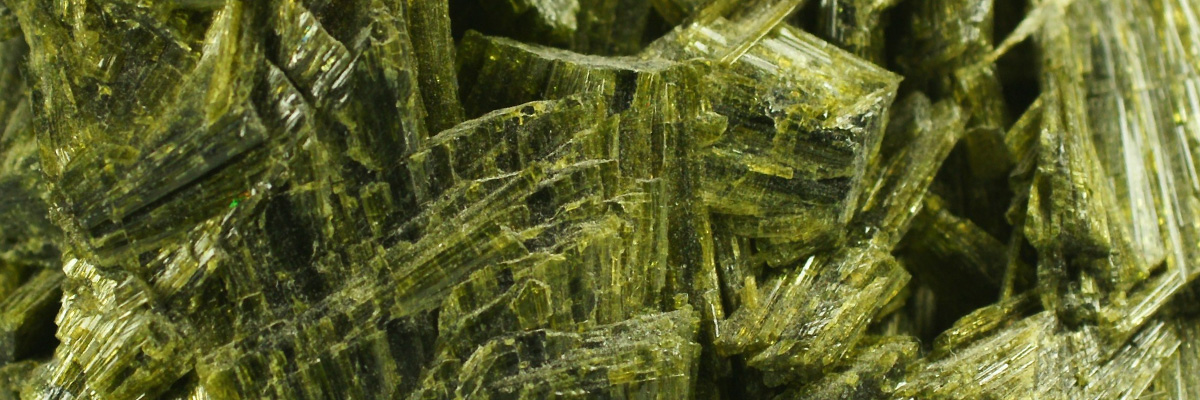Epidote is a calcium aluminum iron silicate mineral belonging to the sorosilicates class. It is known for its pistachio-green to blackish-green color and vitreous to resinous luster. Epidote exhibits well-developed monoclinic prismatic or acicular crystal structures that can vary in size. This mineral is commonly found in metamorphic rocks, such as schist and gneiss, and is often associated with minerals like quartz, feldspar, and amphibole.
Usage
Epidote is not widely used in industrial applications due to its limited abundance and economic value. However, it holds importance in geological research as an indicator of metamorphic conditions and the composition of the parent rock. Additionally, epidote’s presence in rocks can provide valuable information about the geologic history and tectonic setting of a region.
Gemstone
Although not commonly considered a gemstone, transparent and well-formed epidote crystals with an attractive green color can be faceted for use in jewelry. These gemstones are typically sought after by mineral collectors and enthusiasts rather than the general public, as they are not as widely recognized or appreciated as more traditional gemstones like emerald or peridot. Nevertheless, epidote gemstones offer a unique and beautiful option for those seeking distinctive and rare pieces of jewelry.
Origin
Epidote forms in nature through a variety of geological processes, including regional metamorphism, contact metamorphism, and hydrothermal alteration. These processes involve the interaction of high-pressure, high-temperature fluids with rocks, leading to the formation of epidote and other minerals. The presence of iron in the mineral’s composition results in its characteristic green color.
Occurrence
Epidote can be found in numerous geographical locations worldwide, often occurring in metamorphic rocks such as schist, gneiss, and marble. It is also found in some igneous rocks, particularly those that have undergone hydrothermal alteration. Notable occurrences of epidote include deposits in Austria, Brazil, Norway, and the United States. These regions offer diverse geological environments suitable for the formation of epidote minerals.
Metaphysical
In metaphysical and spiritual practices, epidote is believed to possess a range of beneficial properties. The mineral is said to help individuals release negative energies and emotions while promoting personal growth, perception, and emotional healing. Epidote is also considered a stone of manifestation, assisting in attracting what one desires while simultaneously releasing what no longer serves them. Additionally, the mineral is thought to enhance spiritual attunement, intuition, and the ability to communicate with higher realms.
| Class | Sorosilicates |
| Formula | Ca2(Al,Fe)3(SiO4)(Si2O7)O(OH) |
| Luster | Vitreous to resinous |
| Hardness (Mohs) | 6 – 7 |
| Streak | Grayish-white |
| Color | Pistachio-green to blackish-green |
| Cleavage | Good in one direction |
| Specific Gravity | 3.3 – 3.6 |


